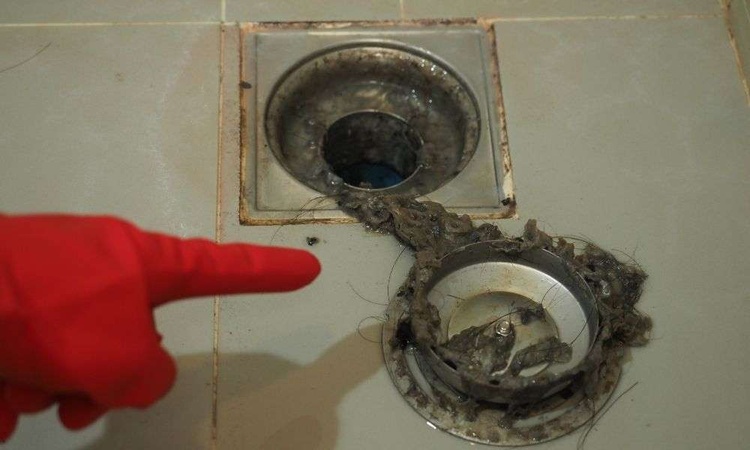Eco-conscious Techniques for Removing Stains Between Tiles
Removing stains between tiles can be done effectively while minimizing environmental impact. This article outlines eco-conscious approaches for cleaning tile joints, seams, and mortar using non-toxic cleaners, mechanical methods, and preventive maintenance. Techniques focus on restoring porcelain and ceramic surfaces, addressing mold and mildew, and protecting grout with low-VOC sealers.

Removing stains between tiles can be done effectively while minimizing environmental impact. This article outlines eco-conscious approaches for cleaning tile joints, seams, and mortar using non-toxic cleaners, mechanical methods, and preventive maintenance. Techniques focus on restoring porcelain and ceramic surfaces, addressing mold and mildew, and protecting grout with low‑VOC sealers.
Cleaning tile surfaces and seams
Start with gentle, non-toxic cleaning agents to protect tile finishes and indoor air. For porcelain and ceramic tiles, warm water with a few drops of biodegradable dish soap is often sufficient to lift surface dirt along seams. For more stubborn soil, use a paste of baking soda and water applied to seams, left for 10–15 minutes, and scrubbed with a soft nylon brush. Steam cleaners provide a chemical-free option for loosening dirt in joints, but test low heat and pressure on a small area first to avoid damaging delicate finishes.
Treating stains in joints and mortar
Address stains by identifying their type: organic stains (food, coffee), oil-based stains, or mineral discoloration. For organic stains, oxygen-based bleach (sodium percarbonate) mixed with water makes an effective, eco-friendlier oxidizer; apply, let sit, then rinse thoroughly. For oil-based stains, a degreasing solution made from warm water and a plant-derived surfactant or a poultice of cornstarch can absorb grease. For mortar that has deeply set mineral stains, mechanical removal of a thin surface layer followed by targeted cleaning preserves structural integrity.
Addressing mold and mildew safely
Mold and mildew in joints require careful handling because they can affect indoor air quality. Use enzymatic cleaners or hydrogen peroxide (3%) applied directly to affected seams to break down spores without strong fumes. Allow the solution to dwell for several minutes, scrub with a soft brush, and dry the area thoroughly—moisture control is critical. Avoid regular use of chlorine bleach indoors; it can release harmful vapors and may damage grout and adjacent tile over time.
Choosing sealers for restoration and protection
After cleaning and full drying, consider sealers to protect mortar and reduce future staining. Look for penetrating, low‑VOC sealers designed for grout that allow moisture vapor to escape while repelling liquid. Sealers help reduce the frequency of deep cleaning and can be part of an eco-conscious restoration strategy. Always follow manufacturer instructions and apply sealers in well‑ventilated areas; perform a small test patch to ensure compatibility with porcelain or ceramic tiles.
Porcelain and ceramic: material-specific tips
Porcelain and ceramic respond differently to cleaners and abrasion. Porcelain is denser and more stain-resistant, but grout joints and seams remain vulnerable. Avoid acidic cleaners on glazed ceramic as they can etch finishes; instead use alkaline or neutral pH cleaners formulated for tile. For ceramic and porcelain restoration, combine gentle mechanical scrubbing with oxygen bleach or enzyme products when appropriate. Regularly inspect tile edges and mortar for cracks that trap moisture and create mold-prone spots.
DIY routines for ongoing maintenance
Establish simple DIY maintenance to preserve tile and mortar: sweep or vacuum to remove grit, mop weekly with a mild, biodegradable cleaner, and spot-treat stains promptly. For seams and joints, scheduled steam-cleaning or brushing helps prevent buildup. When DIYing, use soft tools—nylon brushes, microfibre cloths, and nonabrasive pads—to avoid wearing down grout. Dispose of used cleaning solutions according to local guidelines, and consider consulting local services in your area for periodic professional maintenance if deep restoration is needed.
Conclusion
Eco-conscious grout and seam care combines effective, low-impact cleaning methods, targeted stain treatments, and preventive measures such as sealing and regular maintenance. By choosing biodegradable cleaners, using mechanical and steam-assisted methods, and addressing mold and moisture promptly, you can restore and protect tile surfaces in porcelain and ceramic installations while reducing chemical exposure and environmental harm.





